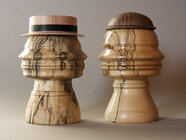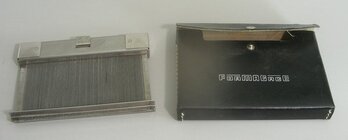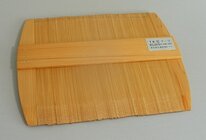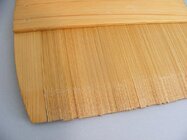Any suggestions for cutting a pattern to use in turning Shaker knobs? I have a sample to match, but would like to get a pattern (of half the knob) to get the 10 knobs I'm turning for a dresser to match as closely as possible. They are just typical Shaker knobs; nothing unusual.
Because the knobs are realatively small, it's hard to cut a pattern precisely from almost any material (rigid cardboard, thin plywood, "chipboard").
Since the number of knobs is only 10 I want to keep initial setup to a minimum.
Because the knobs are realatively small, it's hard to cut a pattern precisely from almost any material (rigid cardboard, thin plywood, "chipboard").
Since the number of knobs is only 10 I want to keep initial setup to a minimum.






